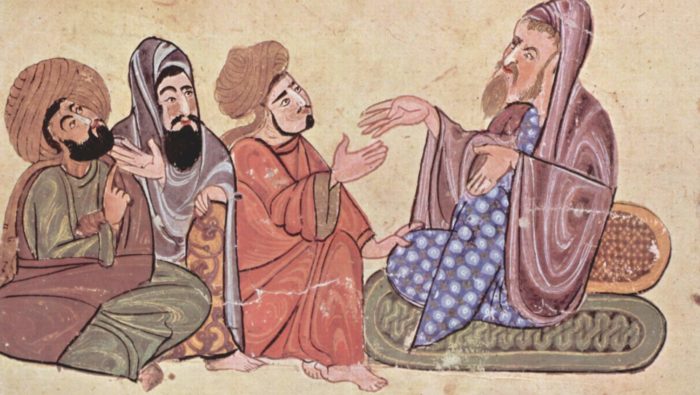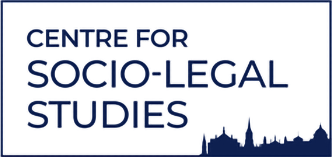
Who are the lawgivers? A comparative perspective

Athenian writers of the classical period credited their lawgivers, Drako and Solon, with foundational works of law-making. In other legal traditions, we hear less about the identity and projects of lawmakers, while for Socio-Legal scholars working on the contemporary world, the question of who makes law, how, and why they do so has been almost entirely eclipsed by questions about the content of law, how it is enforced, and with what effects. In this panel discussion, inspired by the analysis presented by Melissa Lane in her Isaiah Berlin series of lectures focused on ancient Greek texts, four scholars turned their attention to the nature of the lawgiver.
The panellists introduced four quite different case studies: Melissa Lane traced ancient Greek legal and political thinking, Fernanda Pirie presented historic Tibetan legal texts, Dominik Krell analysed aspects of Islamic law, and Francesca Uberti discussed contemporary subcultures engaging in ‘conspiratorial legalism’. Each considered the figure of the lawgiver and the ways in which ideas about the origins of the laws have been articulated and developed in these legal traditions.
More specifically, Melissa Lane looked at the role played by lawgivers (nomothetes in the singular) who ‘laid down’ laws in ancient Greek poleis, focusing on the archaic Athenian lawmaker Solon and Lycurgus of Sparta. These lawgivers were widely revered in their societies, and their laws were expected to offer stable and long-lasting normative orders, rather than being regularly amended by subsequent governments. The laws could even be set to music and sung in social occasions, showing how the norms set out by lawgivers were impressed in the ‘hearts’ and ‘habits’ of the citizens through social practice.
Fernanda Pirie discussed how the figure of the lawgiver was mythologised in Buddhist Tibet. Later historians attributed historic political, religious, and legal accomplishments to the foundational figure of the 7th-century Tibetan king Songtsen Gampo. They credited him with having introduced Buddhism to Tibet, as well as having ‘imported’ a new writing system and having created a set of laws, based on Buddhist moral principles. The attention paid to Songtsen Gampo’s role as original lawgiver in Tibetan historiography is significant, as lawgiving is not an achievement attributed to subsequent Tibetan rulers and reveals the symbolic power of these shared laws as markers of a unitary Tibetan identity.
The symbolic power of lawgiving and the question of who is the ‘original’ lawgiver were also important themes in Dominik Krell’s talk on lawgivers and lawgiving in Sunni Islamic legal thought. Islamic legal scholars engage in rigorous hermeneutical activities which aim to interpret the divine guidance found in the religious texts of Islam, requiring in-depth knowledge of the Quran and Sunna. While these human interpretations are highly complex and prescriptively detailed, they are always supposed to constitute interpretations of the shari’a rather than representing an original form of law-making – as it is God who remains the ultimate lawgiver.
Finally, Francesca Uberti turned to the contemporary world by considering how fringe groups invoke natural law traditions to challenge state authority. Historically, both conservative and radical thinkers have referred to the notion of a higher ‘natural law’ prevailing over contingent human-made laws, with opposing objectives. Contemporary ‘counterpublics’ are arguably building on these radical invocations of natural law. However, rather than demanding more representation or participation in the political order, as past radicals did, they are using natural law as a conceptual resource to imagine an alternative legal order beyond the state.
After the presentations, the discussion ranged widely over the cases and issues they raised. Some common themes emerged. The paradigm case across these various traditions was not one in which the lawgiver was thought to be the sole originator of the law. He (more rarely she), rather, interpreted, formulated, or ‘laid down’ laws that had their origins elsewhere. These lawgivers contrast with the image of the contemporary legislator, who is deemed to be sovereign within the modern nation state. In the cases presented, the law-givers may have written original texts, but they were said to have drawn on ideas or principles with deeper origins. The Athenian and Spartan lawgivers were chosen to lay down laws within already evolving Socio-Legal frameworks, and Greek lawgivers more generally often drew on laws already existing in other Greek and non-Greek polities. Songtsen Gampo made the first Tibetan laws on the basis of legal principles that originated in Buddhist India. The Islamic legal scholars were interpreting law that originated with God. Contemporary groups evoke a sense of natural law. In each case, the law itself, was not considered to be a purely human creation. Studying the figure of the lawgiver can, thus, shed light on the authority, mystique, and symbolic power of the law, itself, as it has been conceived in different contexts.
Comparative reflection also raises questions about the role of the lawmaker. In none of the cases presented was the lawgiver simply exercising power or designing rules as part of a larger project of government and social regulation. Nor were the laws thought simply to have reflected custom. Rather, they were thought to reflect moral or religious principles, capable of founding good and just societies. This should make us question some of the assumptions that scholars commonly make about how laws are made and for what purposes, as well as the relationship between law and political power.
These comparative reflections, in the end, raised more questions than we could begin to answer. However, they did highlight potentially fruitful issues for further study, in both historic and contemporary contexts. Asking about who was thought to have given, made, or laid down the law can, it is apparent, tell us much about what different societies have considered law should be and do. It can, that is, address fundamental questions about the nature and role of laws in societies.


